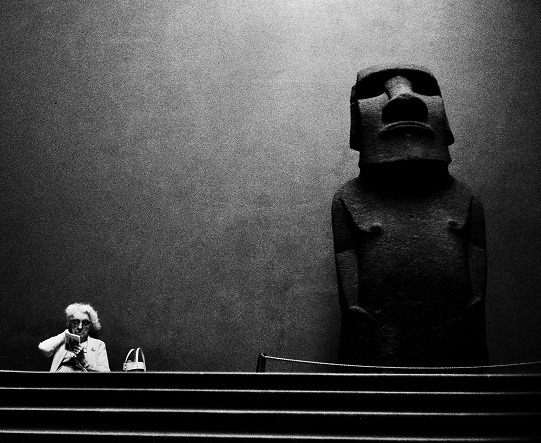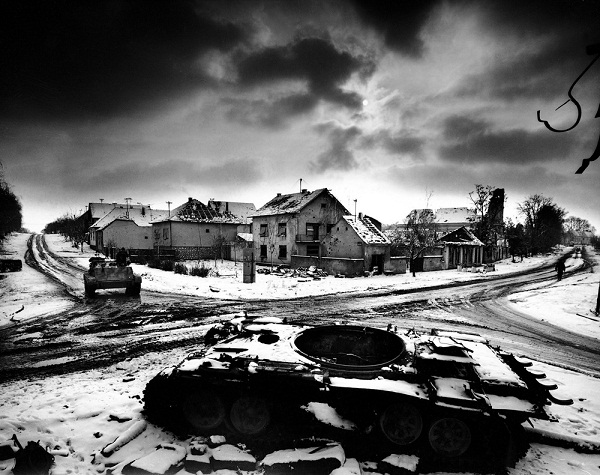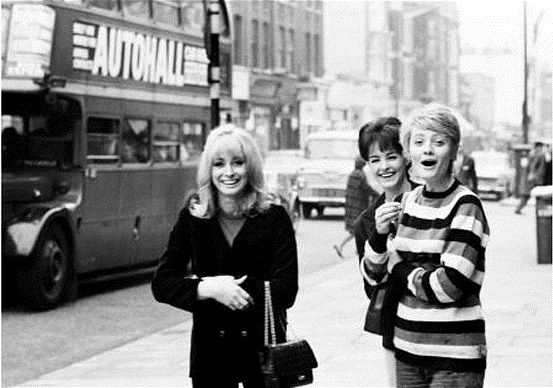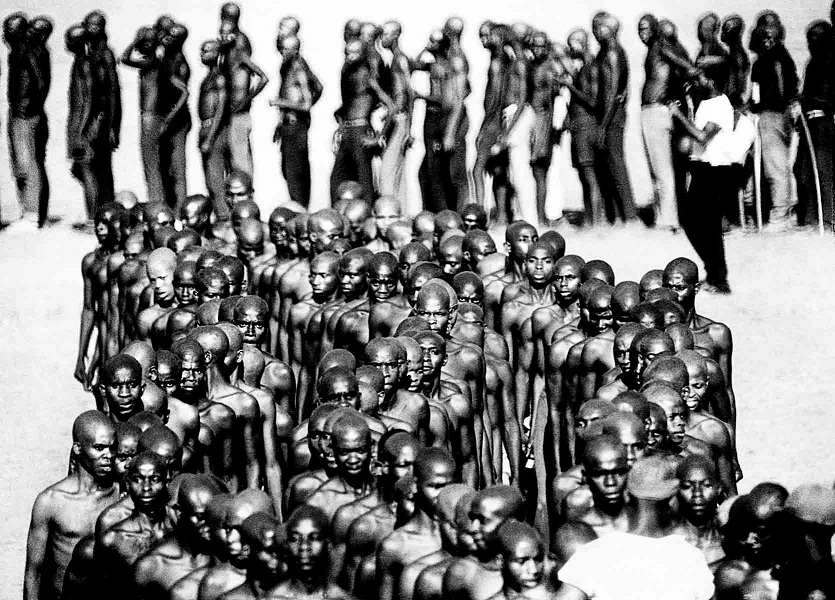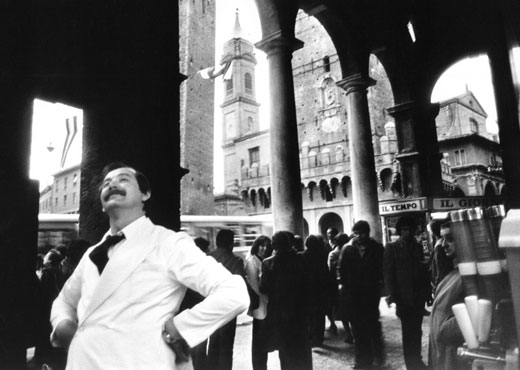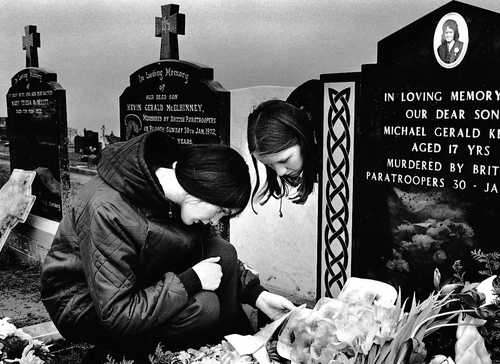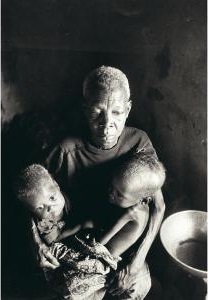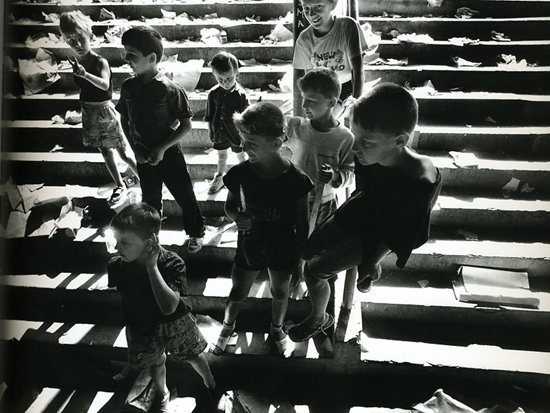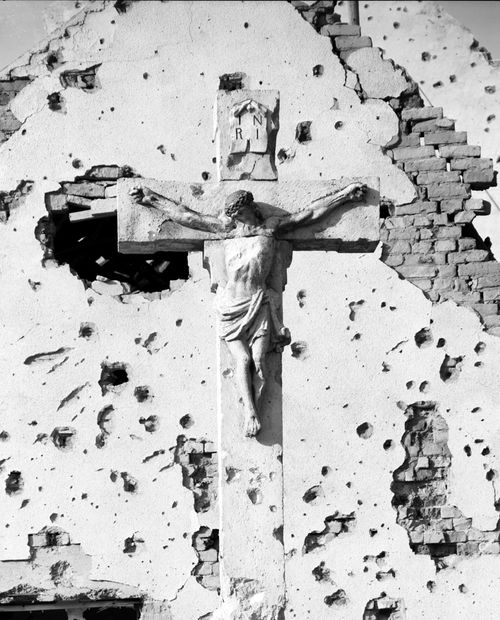<Back to Index>
- Photographer and Photojournalist Robert Capa (Endre Ernö Friedmann), 1913
- Photographer Romano Cagnoni, 1935
PAGE SPONSOR
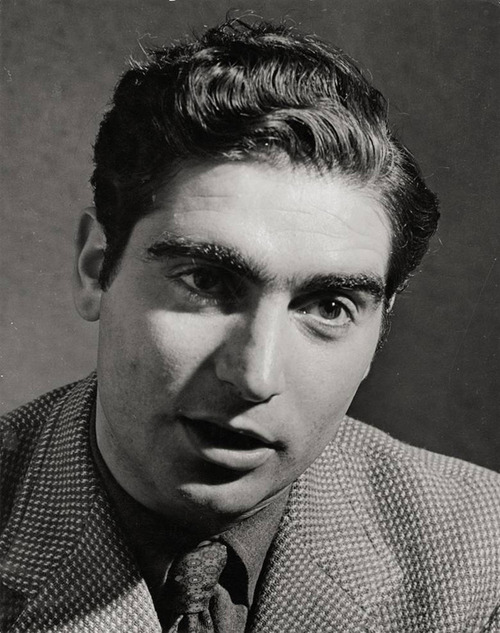
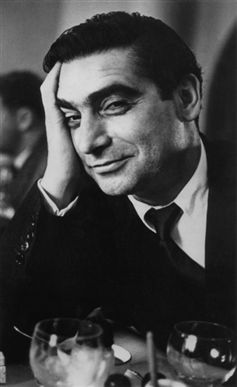
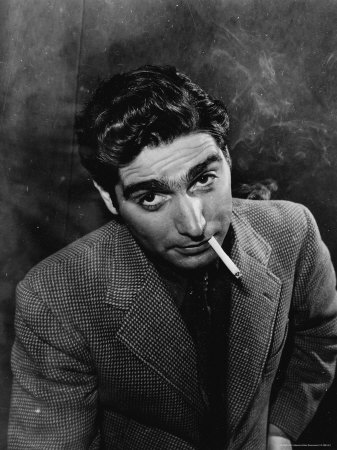
Robert Capa (born Endre Ernő Friedmann; October 22, 1913 – May 25, 1954) was a Hungarian combat photographer and photojournalist who covered five different wars: the Spanish Civil War, the Second Sino - Japanese War, World War II across Europe, the 1948 Arab - Israeli War and the First Indochina War. He documented the course of World War II in London, North Africa, Italy, the Battle of Normandy on Omaha Beach and the liberation of Paris. His action photographs, such as those taken during the 1944 Normandy invasion, portray the violence of war with unique impact. In 1947, Capa co-founded Magnum Photos with David "Chim" Seymour, Henri Cartier - Bresson, George Rodger and William Vandivert . The organization was the first cooperative agency for worldwide freelance photographers.
Born Endre Friedmann to Dezső and Júlia Friedmann on October 22, 1913 in Budapest, Hungary. Deciding that there was little future under the regime in Hungary, he left home at 18.
Capa originally wanted to be a writer; however, he found work in photography in Berlin and grew to love the art. In 1933, he moved from Germany to France because of the rise of Nazism, but found it difficult to find work there as a freelance journalist. He adopted the name "Robert Capa" around this time — in fact cápa ("shark") was his nickname in school and also he felt that it would be recognizable and American sounding since it was similar to that of film director Frank Capra. He found it easier to sell his photos under the newly adopted "American" sounding name and over a period of time gradually assumed the persona of Robert Capa (with the help of his current girlfriend Gerda Taro, who acted as an intermediary between himself and those who purchased the photos taken by the "great American photographer, Robert Capa"). Capa's first published photograph was that of Leon Trotsky making a speech in Copenhagen on "The Meaning of the Russian Revolution" in 1932.
From 1936 to 1939, he was in Spain, photographing the horrors of the Spanish Civil War, along with Gerda Taro, his companion and professional photography partner, and David Seymour. In 1938, he traveled to the Chinese city of Hankow, now called Wuhan, to document the resistance to the Japanese invasion.
In 1936, he became known across the globe for a photo (known as the "Falling Soldier" photo) long falsely presumed to have been taken in Cerro Muriano on the Cordoba Front of a Workers' Party of Marxist Unification (POUM) Militiaman who had just been shot and was in the act of falling to his death. There has been a long controversy about the authenticity of this photograph. A Spanish historian identified the dead soldier as Federico Borrell García, from Alcoi (Alicante). This identification has been disputed. In 2003, the Spanish newspaper El Periodico claimed the photo was taken near the town of Espejo, 10 km from Cerro Muriano, and that the photo was staged. In 2009, a Spanish professor published a book titled Shadows of Photography, in which he showed that the photograph could not have been taken where, when, or how Capa and his backers have alleged.
Many of Capa's photographs of the Spanish Civil War were, for many decades, presumed lost, but surfaced in Mexico City in the late 1990s. While fleeing Europe in 1939, Capa had lost the collection, which over time came to be dubbed the "Mexican suitcase". On Decenber 19, 2007 the owner of the negatives, Benjamin Tarver decided to return the negatives to the families of the photographers. The collection contained 4,500 negatives of photographs by Capa, Gerda Taro and Chim. Ownership of the collection was transferred to the Capa Estate, and in December 2007 was moved to the International Center of Photography, a museum founded by Capa's younger brother Cornell in Manhattan.
At the start of World War II, Capa was in New York City, having moved there from Paris to look for work, and to escape Nazi persecution. During the war, Capa was sent to various parts of the European Theater on photography assignments. He first photographed for Collier's Weekly, before switching to Life after he was fired by Collier's. He was the only "enemy alien" photographer for the Allies. During July and August 1943 Capa was in Sicily with American troops, near Sperlinga, Nicosia and Troina. The Americans were advancing toward Troina, a strategically located town which controlled the road to Messina (Sicily's main port to the mainland). The town was being fiercely defended by the Germans, in an attempt to evacuate all German troops. Robert Capa's pictures show the Sicilian population's sufferings under German bombing and their happiness when American soldiers arrive. One notable photograph from this period shows a Sicilian peasant indicating the direction in which German troops had gone, near Sperlinga. On 7 October 1943 Robert Capa was in Naples with Life reporter Will Lang Jr., and there he photographed the Naples post office bombing.
Probably his most famous images, The Magnificent Eleven are a group of photos of D-Day taken by Robert Capa. Taking part in the Allied invasion Capa was with the second wave of troops on the American invasion beach, Omaha Beach. The men storming Omaha Beach faced some of the heaviest resistance from German troops within the bunkers of the Atlantikwall. While under constant fire Capa took 106 pictures, but all but eleven were destroyed in a photo lab accident back in London.
In 1947 Capa traveled into the Soviet Union with his friend, writer John Steinbeck. He took photos in Moscow, Kiev, Tbilisi, Batumi and among the ruins of Stalingrad. The humorous reportage of Steinbeck, A Russian Journal, was illustrated with Capa's photos. It was first published in 1948.
In 1947, Capa founded the cooperative venture Magnum Photos with Henri Cartier - Bresson, William Vandivert, David Seymour and George Rodger. In 1951, he became the president.
Capa toured Israel after its founding, and supplied the copious photographs for a book on the new nation written by Irwin Shaw, Report on Israel.
In the early 1950s, Capa traveled to Japan for an exhibition associated with Magnum Photos. While there, Life magazine asked him to go on assignment to Southeast Asia, where the French had been fighting for eight years in the First Indochina War. Despite the fact he had sworn not to photograph another war a few years earlier, Capa accepted and accompanied a French regiment with two other Time - Life journalists, John Mecklin and Jim Lucas. On May 25, 1954 at 2:55 p.m., the regiment was passing through a dangerous area under fire when Capa decided to leave his Jeep and go up the road to photograph the advance. About five minutes later, Mecklin and Lucas heard an explosion; Capa had stepped on a landmine. When they arrived on the scene, he was still alive but his left leg had been blown to pieces, and he had a serious wound in his chest. Mecklin called for a medic and Capa was taken to a small field hospital where he was pronounced dead on arrival.
He was born into a Jewish family in Budapest. His parents were tailors. At the age of 18, first he settled down in Vienna, later relocated to Prague and finally in Berlin. He started his studies in journalism at the German Political College but he was not allowed to continue them because he was Jewish. He settled down in Paris, where he adopted the name ’Robert Capa’ in 1934. At that time, he had already been a hobby photographer.
In 1934 "André Friedman", as he called himself at that time, met Gerda Pohorylle, a German Jewish refugee. The couple lived in Paris where André taught Gerda photography. Together they contrived the name and image of "Robert Capa" as a famous American photographer. Gerda took the name Gerda Taro, becoming successful in her own right. She traveled with Capa to Spain in 1936 with the intention to document the Spanish Civil War. In July 1937 Capa went on a short business trip to Paris while Gerda remained in Madrid. She was killed near Brunete during a battle. Capa, who was reportedly engaged to her, was deeply shocked and never married.
In February 1943 Capa met Elaine Justin, the beautiful young wife of actor John Justin. They immediately fell in love and the relationship lasted until the end of the war, although Capa spent most of his time in the front line. Capa lovingly called the redheaded Elaine "Pinky," and their romance became the topic of his war memoir, Slightly Out of Focus. In 1945, Elaine broke up with Capa and married her friend, Chuck Romine.
Some months later Capa became the lover of actress Ingrid Bergman, who was traveling in Europe at the time entertaining American soldiers. In December 1945, Capa followed her to Hollywood, where he worked for American International Pictures for a short time. Bergman tried to persuade him to marry her, but Capa didn't want to live in Hollywood. The relationship ended in the summer of 1946 when Capa traveled to Turkey.
Capa's younger brother, Cornell Capa, also a photographer, worked to preserve and promote Robert's legacy as well as develop his own identity and style.
In order to preserve the photographic heritage of Capa and other photographers, Cornell founded the International Fund for Concerned Photography in 1966. To give this collection a permanent home he founded the International Center of Photography in New York City in 1974.
The Overseas Press Club created an award in his honor, the Robert Capa Gold Medal. It is given annually to the photographer who provides the "best published photographic reporting from abroad, requiring exceptional courage and enterprise".
Capa is known for redefining wartime photojournalism. His work came literally from the trenches as opposed to the more arms - length perspective that was the precedent previously. He was famed for saying, "If your picture isn't good enough, you're not close enough."
Capa is credited with coining the term Generation X. He used it as a title for a photo - essay about young men and women growing up immediately after the Second World War. The project first appeared in Picture Post (U.K.) and Holiday (U.S.A.) in 1953. Describing his intention, Capa said "We named this unknown generation, The Generation X, and even in our first enthusiasm we realized that we had something far bigger than our talents and pockets could cope with."
In 1995, thousands of negatives to photographs that Capa took during the Spanish Civil War were found in three suitcases bequeathed to a Mexico City filmmaker from his aunt. In 1939, after Capa fled Europe for America during World War II, these negatives were left behind in a Paris darkroom and they were assumed lost during the Nazi invasion of Paris. It is not known how the negatives traveled to Mexico, but apparently Capa asked his darkroom manager, a Hungarian photographer Imre Weisz, to save his negatives during 1939 and 1940. Jerald R Green, a professor at Queens College, was informed by a letter from the Mexican film maker about this discovery. In January 2008, the negatives transferred to the Capa estate, but the Mexican film maker has asked to remain anonymous.
The International Center of Photography organized a traveling exhibition titled This Is War: Robert Capa at Work, which reexamines Capa's innovations as a photojournalist in the 1930s and 1940s with vintage prints, contact sheets, caption sheets, handwritten observations, personal letters and original magazine layouts from the Spanish Civil War, the Second Sino - Japanese War and World War II. The exhibition has been on display at the Barbican Art Gallery and the International Center of Photography of Milan and was on display at the Museu Nacional d'Art de Catalunya until September 27, 2009. It then moved to the Nederlands Fotomuseum from October 10, 2009 until January 10, 2010.
As a teenager, Capa was drawn to the Munkakör (Work Circle), a group of socialist and avant garde artists, photographers, and intellectuals centered around Budapest and he was a regular participant in the demonstrations against the repressive regime of Miklós Horthy. In 1931, just before his first photo would be published, Capa was arrested by the Hungarian secret police, beaten, and jailed for his radical political activity; a police official’s wife — who happened to know his family — won Capa’s release on the condition that he would leave Hungary immediately.
The Boston Review described Capa as "a leftist, and a democrat — he was passionately pro - Loyalist and passionately anti - fascist ..." During the Spanish Civil War Capa traveled with and photographed the Workers' Party of Marxist Unification (POUM), under which George Orwell served, which resulted in his best known photograph.
The British magazine Picture Post ran his photos from Spain accompanied by a portrait of Capa, in profile, with the simple description: "He is a passionate democrat, and he lives to take photographs."
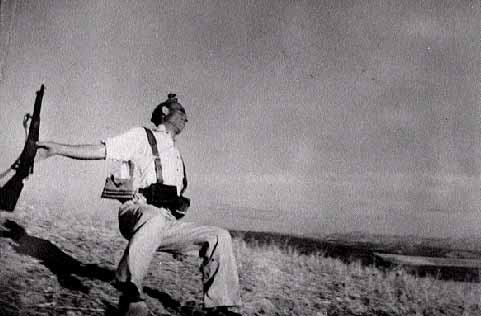
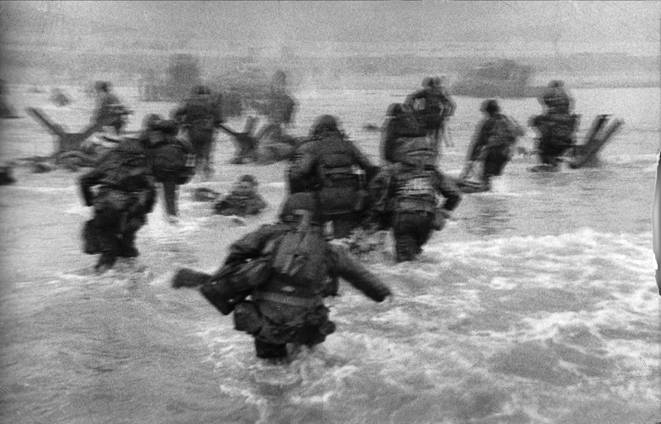
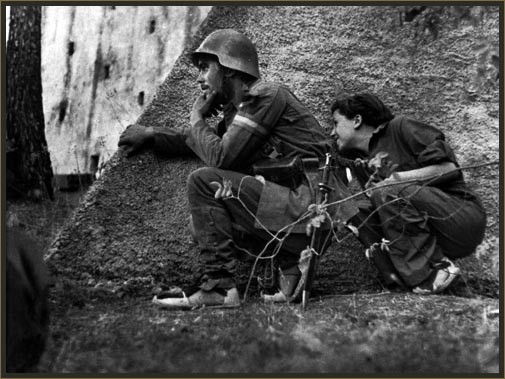
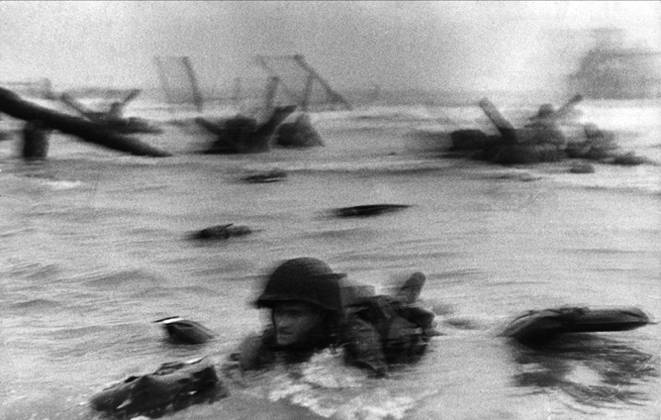
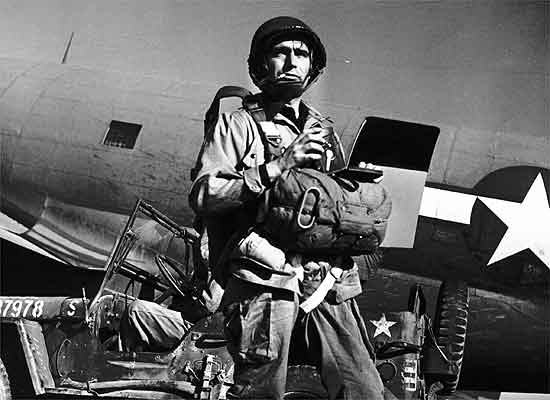
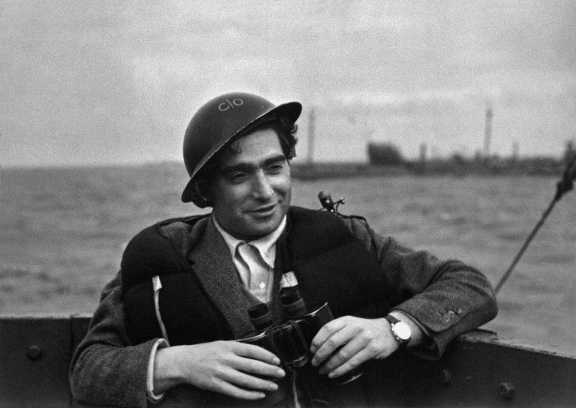
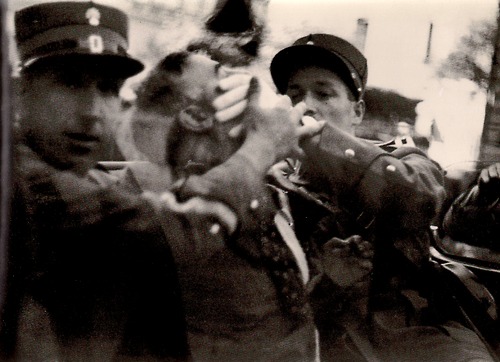
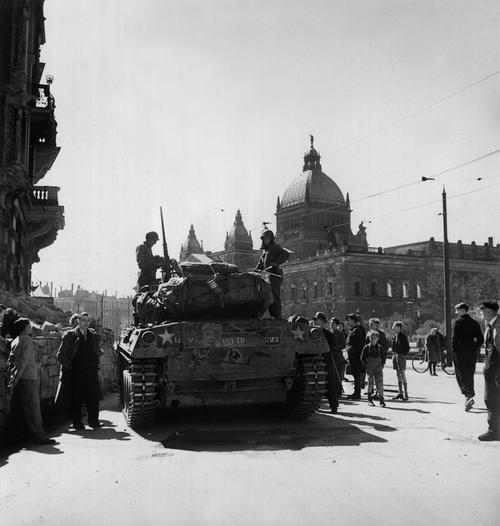
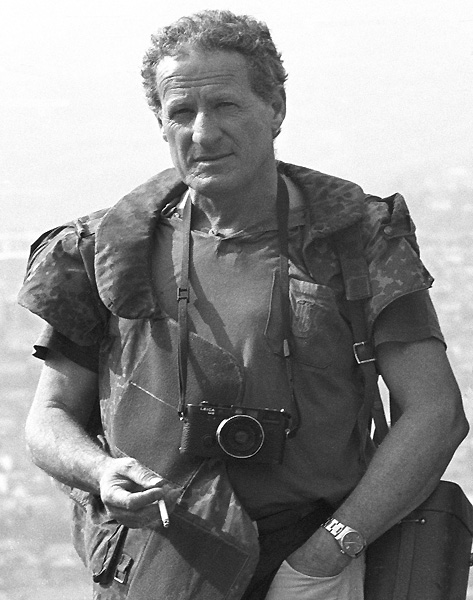
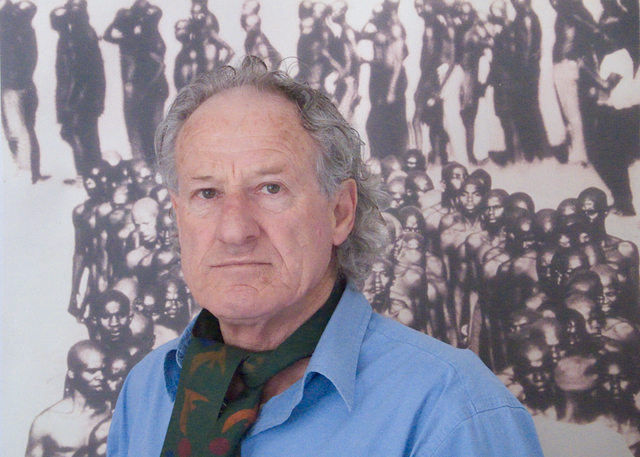
Romano Cagnoni (November 9, 1935 Pietrasanta, Italy - January 30, 2018) was an Italian photographer who spent most of his professional life based in London.
Romano Cagnoni used to photograph sculptures in the small town of Pietrasanta, Tuscany, which is famous for its sculpture studios. In 1958, he moved to London, where he lived for 30 years. Here, he started working as a freelance photographer contributing to different European magazines. He worked with Simon Guttmann (a founder of modern photojournalism with Robert Capa, Felix Mann, Kurt Hutton, Henri Cartier - Bresson, etc.).
He was the first western non - communist photographer to be allowed in North of Vietnam with the distinguished British journalist James Cameron. Cambodia, Nigeria during the civil war, Israel, Northern Ireland, Afghanistan, Yugoslavia, Chechnya, Kosovo, were the site of his works about forbidden stories that Cagnoni was able to photograph: among them, the Soviet Army in Afghanistan in 1980, and in Poland (1981), Argentinian airports during the Falklands war in 1982. He was the first photographer to set up a studio on the front line to photograph warriors during the fighting in Chechnya in 1995.
In 1968 he won the Overseas Press Club Award, for his Nigerian civil war reportage published in "Life Magazine", the German Art Directors’ Club bronze medal for documenting with a large format camera the war destruction in former Yugoslavia, and many Italian prizes. He returned to live in his hometown in Italy, from where he traveled worldwide for his work.
Cagnoni held many solo exhibitions, group shows and retrospectives worldwide. His exhibition at Arengario Palace in Milan bore the title "ChiaroScuro", which, beyond the literal meaning, hints to "humor and darkness": these photographs show the darkness of war and sometimes the humor of every day life. Cagnoni felt that these opposites were the essence of his work.
The Sunday Times former editor Harold Evans, in his book Pictures on a Page: Photo - Journalism, Graphics and Picture Editing,
mentions Cagnoni as one of the most famous photographers in the world
with Henri Cartier - Bresson, Bill Brandt, Don McCullin and Eugene
Smith.
In 1970 Cagnoni married the English artist Berenice Sydney, who died in 1983.
